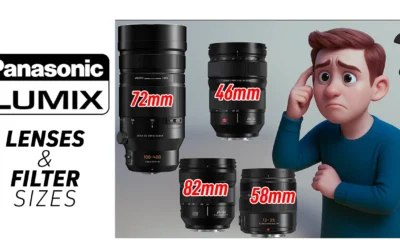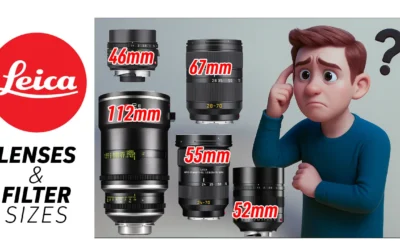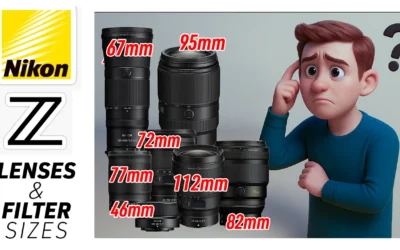+2 and +4 Close Up / Macro Diopters!

Instantly Transform your existing lenses into Close Up / Macro-Like Lenses!
The Wave 3 Journey started when I (Michael) needed a range of Macro Lenses for a MAVEN filter commerical. I already have a Canon 100mm 2.8 EF, but I needed different perspectives. The problem? Good macro lenses are expensive, ranging from $500-$1200 each, and most of them are fixed focal lengths to maximize their sharpness.
The idea was simple; make a Magnetic Diopter lens that could mount in a second, greatly decreasing the cost of close up macro and decreasing the time it took to get set up.
But how detailed & sharp are diopters?
There are always DOF (depth of field) and Diffraction challenges when shooting macro, but the rule of thumb is this: The sharper your lens, the better the results. A diopter cant make an already soft lens sharp, but it can make a sharp lens get much closer, especially the more telephoto it is. This really unlocks a whole new world of very close up photography, without breaking the bank, allowing you to use your existing lenses in a new way.

A Non-macro Canon 24-105 f4 RF with a MAVEN +4 Diopter.
(Note: Finger tip ridges for scale reference.)

Canon’s 70-200 RF playing the role of Near Macro Lens getting this $5 bill & Orange Lichen
Using the MAVEN +4 Diopter (uncropped & unedited)
What is Macro?
True Macro lenses shoot at a 1:1 ratio, meaning that if the subject you are shooting is 1 cm tall, it will be projected as 1 cm tall on the sensor. True macro lenses are designed to allow us to get closer to our subjects than non-macro lenses, magnifying the image.

the lens is projecting it onto the sensor in its actual size.
To illustrate both the size and sharpness of the subject matter as its projected by a lens, I have decided to use a ruler in cm/mm. If we know the size of the sensor, we will know the ratio of magnification of the lens by using the ruler. In the case of my 100mm Canon, a 1:1 ratio looks like this:

(As a side note, anything that is relatively magnified, but not at least a 1:1 ratio, is more properly referred to as a “close up” lens.)
How Diopters Work:
Diopter lenses and extension tubes have long been a loophole for general purpose lenses as close-up lenses. They change the minimum focusing distance of a lens, allowing us to get much closer than normal to our subject matter, magnifying the image.

Their use still impacts image quality due to aberrations
& are less effective on lenses with focal lengths over 80mm.

Extension Tubes & Their Limits
Extension tubes are also a common way of getting lenses closer to our subject matter. They work by creating space between the camera and lens, and one strength is they do not change the optics of the lens. However, they do not greatly enhance the magnification properties of lenses over 80mm, take more time to install, and also expose our sensors to the environment.
(Show head to head comparison of Extension Tubes at 500mm vs Diopter)
All of the diopters on the market were threaded, meaning you had to physically screw them into the lens. The obvious question was: can we do this in a magnetic way? Little did I know how many other products the resulting solution would bring.
“It cannot be done.”
When I first brought up the idea of making magnetic diopter lenses as new product candidates, I was met with resistance from my manufacturing team:
“The Diopter lenses are much heavier than NDs or CPLs, there is no way the current designs can support them magnetically, nor can we easily apply MAVENs MRC and nano coating.”
This sparked months of development and testing that led to a world’s first; thicker mounting ring, better magnets, and a whole new process to allow for the coatings MAVEN is famous for.
This was the result, with lens shaped knurlings in silver designating their purpose.

Followed up by an even heavier:

If you only choose only one diopter, this would be the one you want.
Let’s cut to the chase. This is the closest distance my 100-500 RF can do natively:

I had to back up several feet away, then zoom in to make this shot work
This is what I we can do with Extension Tubes:
(Show Image – as soon as it arrives)
And this is what happens when I use a new MAVEN +2 Diopter on the same lens:

Focusing on the top row of numbers. Note the Shallow DOF fall off on the top & bottom of the ruler.
Projecting 38.5mm onto a 36mm wide sensor! Nearly a 1:1 Macro result!
Converting a 500mm lens into a near 1:1 macro, in less than a second, at a fraction of the cost of a dedicated macro lens was something I knew the photography community would want! And while I could see that the image wasn’t quite sharp as the native lens, it was more than sharp enough! I was thrilled!
What if we stack the diopters?
Something we quickly noticed was the +2 diopter was thin enough to stack, meaning we could stack 2 units of +2, or add them to the +4 Diopter to get +6 or +8.
Most general purpose lens (like my 24-15 f4 that lives on my camera) are not designed for macro type shots and require much further minimum focusing distances, limiting the lenses ability to get very close to my subject, meaning the subject wont be as magnified:
Normal Image:

Stacked Diopters Image:
What happens when we stack 2 x +2 Diopters with a +4 on the 24-105 f4 EF?

Once again, within striking distance of a true 1:1 Macro, with still decent sharpness. An Insane result!
(*Diopters excel with focal lengths of over 80mm, primes & sharp lenses.
Already soft lenses / focal lengths will not do great with them!)
Diopters have been around for ages, they just haven’t been done to our knowledge as “magnetic filters”, meaning we have greatly reduced the setup time from needing to thread them in, making them fast and easy to use. While field testing Michael noted:
“The ability to change from regular shooting to close up shooting at this speed is something I have never experienced before. Having it on a zoom meant instant control of focal lengths for different perspectives. It was an absolute delight and will be a game changer for anyone interested in trying out close up photography.”

& Nano Particle Technology, resulting in super easy to clean diopters!
No Other diopters on the Market are both magnetic & coated!
Super Macro is a thing!
For those of you who have your favorite macro lens, there is even better news.
MAVEN Diopters also work with macro lenses, changing the lens from a macro 1:1, to what is called “super macro”, meaning you can get even closer than a 1:1 ratio!. For those of you who want those extra details this is the way.

23mm Subject onto a 36mm wide sensor!


Which brings us to the next problem……
Macro Shots often require very long exposures
(Show Shallow DOF with Macro)
The closer we get to our subjects the shallower the depth of field.
Which basically means that if you want to have a deep depth of field on macro shooting, we often have to use a smaller aperture, at least this is the knee jerk reaction, “stop that aperture down and try to get more depth.”
(Chart of differences & examples between the 2. +2 is sharper, but not as close. +4 is closer but still significantly Sharp.)
But there are other problems with doing this, smaller sized apertures require a much longer exposure.
If we are dealing with a perfectly still subject, we can use a longer shutter speeds and get the shot. If anything is moving, say for example, the wind blowing or insect moving…it’s not going to work out. All this to say that we need more relative light when shooting macro, simply because of the close-up requirement of needing to use a higher f stop for a deeper DOF.
(Show photo examples of macro movement)
To complicate matters, once we get into much higher f stops with much smaller aperture sizes, we start running into sharpness issues, which is referred to as diffraction.
While it is lens and sensor dependent (can vary) generally speaking once we get into the f11 or f13 range, we start the lose significant sharpness which can make our macro subjects look blurry and out of focus.
As with all MAVEN filters, the physical knurling of each filter is unique, in this case 2 silver lens icons for +2 Diopter and 4 for the +4.)
What most high-end macro shooters do to get around this is to take multiple shots at slightly different focus positions and “stack” the image in an editing program like photoshop, which produces stunning results, but we still have the problem of needing longer shutter speeds.
A World’s First – The MAVEN Magnetic Mini Ring Light!

The MAVEN Mini Ring Light is dual magnetic, meaning that it mounts to your camera lens with a MAVEN Adapter ring or step-up ring for instant shooting access, and can also receive additional filters once on, including the new +2 and +4 diopters, and other filters for combined effect!

Specs: 67 Grams – 13.5 x 11 x 2.3 cm – 25-30 Minutes Of Power – Rechargeable Battery
2700-6000 K at > 95 CRI, with Hemisphere Brightness Control

Uncropped, unsharpened, all natural lighting (notice the lower exposure on the front of the strawberry).

The Ring Light + Diopter Combination changes non-Macro lenses, to Macro-Like in seconds!





The first version of this light was rather large:
(Show original)
And while the form factor was beautiful, it was just too big and heavy, likely causing it to be left behind. I also thought the buttons were a bit too hard to see and not very easy to use.
I wanted something that could be as small as possible, so it could live in our camera bags and not take up much space or weight, but I also wanted it to be very simple to use.
“It has to be smaller and very intuitive”
The Inverse Square Law of Light
One of my favorite physics laws in regards to light says that for every half distance you get to a subject, the light source becomes 4 times brighter. This is an easy way to leverage limited light sources.

The Closer your Light to your subject, the MUCH brighter it will be!
Therefore, when shooting macro type subject matter, you do not need very high light output, and therefore
we were able to make a small, compact, yet powerful macro ring light.
If we put a light a few centimeters away from our shooting subject, the light can be many, many times brighter, which means we do not really need to have a very bright light source (such as a strobe) and also means the output power doesn’t have to be as great.
Show Test Results of New Ring Light
There are also macro videographers out there who want the advantage of a continuous light source instead of a strobe.

Unlocks as a free bonus for all Ring Light Backers at $10,000
The Achilles Heel of Ring Lights
Ring lights have been around for years, but there is one thing about them I have never loved:
They produce a flat look.
(Show larger ring lights vs Key and Fill Lights)
Most of this has to do with the fact that the intensity of the light control on ring lights is uniform, and in the Tik Tok age, a flat look has started to become more and more acceptable, even though the quality of light itself isn’t as pleasing to the subject as say, Rembrandt lighting, or using a key and fill light. They are usually two different light sources / tools, which means an extra thing to carry.
Why Not Just Build the Key and Fill Options into the Device?
I wanted the ability to split the ring light into two separately controllable hemispheres.
This way, users could adjust how much light is acting as a key or fill. They could turn them off individually, or alternately change and adjust their brightness. To the best of my knowledge, this too is a world’s first for a mini ring light!

2 separate Hemi-Spheres! This allows for Micro Key & Fill Light control for smaller subject matter.
Other Usability Problems Addressed
As with all MAVEN products, we want the user experience to be fast, easy and fun. Whenever possible, we want affordance to be involved- which is a design strategy that offers intuitive instruction to the user about what the control is.

Note the colored & shaped buttons which give users a cue for what each one does.
We’ve inverted the text to make it easy to understand when using from behind the camera.
For this reason, I insisted that the button controls had specific shapes and also color coded and then fought with the manufacturer about how this would increase the cost of the product as “every color requires extra cost”. They wanted me to use all black round buttons that gave no clues as what each button was because they just wanted to crank the product out and get paid. To me this was unacceptable.
I wanted the buttons shapes and colors to be instructive.
A triangle with the tip up, should be to increase the power – it should be white.
A triangle with the tip down, should be to decrease the power – it should be grey.
A Square button with the power logo should turn the light on, it should be green (to go!).
And the Hemisphere button should be round, and it should be blue.
To me a positive user experience is worth the added production cost.


